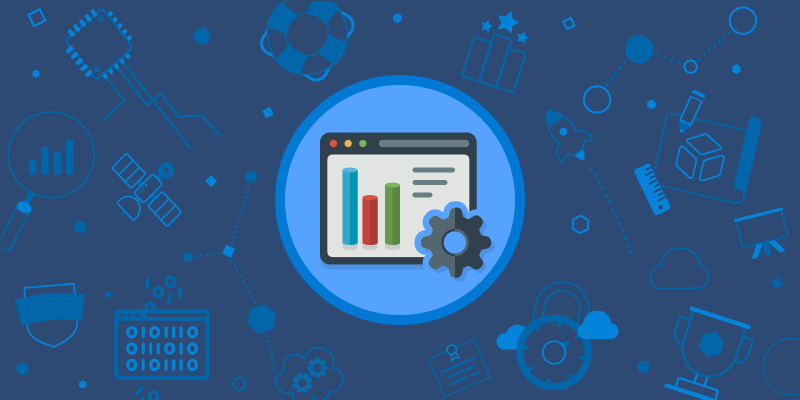Exam PL-100: Microsoft Power Platform App Maker – Skills Measured
Audience Profile
The App Maker builds solutions to simplify, automate, and transform tasks and processes for themselves and their team where they have deep expertise in the solution business domain. They have basic data modeling, user experience design, requirements analysis, and process analysis skills.
The App Maker creates and enforces business processes, structures digital collection of information, improves efficiency of repeatable tasks, and automates business processes.
The App Maker uses the Maker tools of Power Platform to solve business problems. They may use advanced features of Microsoft apps and third-party productivity tools. The App Maker is aware of the capabilities and limitations of available tools and understands how to apply them.
The App Maker is self-directed, and solution focused. They may not have formal IT training but are comfortable using technology to solve business problems with a personal growth mindset. They understand the operational need and have a vision of the desired outcome. They approach problems with phased and iterative strategies.
Skills Measured
NOTE: The bullets that appear below each of the skills measured are intended to illustrate how we are assessing that skill. This list is not definitive or exhaustive.
NOTE: In most cases, exams do NOT cover preview features, and some features will only be added to an exam when they are GA (General Availability).
Design solutions (10-15%)
Create a high-level design
- collect business requirements
- identify data sources
- describe real-world objects as entities
- describe the user experience
- create a high-level data model
https://docs.microsoft.com/en-us/powerapps/guidance/planning/designing-phase
https://docs.microsoft.com/en-us/powerapps/guidance/planning/app-tasks
Identify required Power Platform components
- determine required Power Apps
identify existing resources and licenses
- identify gaps between existing functionality and requirements
- map problem domain to Power Platform tools
- identify required business processes
- evaluate accelerators, Microsoft apps and services, and third-party solutions
- describe connectors including standard, premium, and custom connectors
Design data models
- determine required entities
- identify relationships
- identify fields and data types
- determine requirements for offline access
Design User Interface
- identify opportunities for component reuse
- apply user interface (UI) standards
- design for accessibility : https://docs.microsoft.com/en-gb/powerapps/maker/canvas-apps/accessible-apps
- design for localization https://docs.microsoft.com/en-gb/powerapps/maker/model-driven-apps/translate-localizable-text
Design output
- define data output requirements
- define requirements for visualizations
- identify repositories for analytical data
Design security, privacy, and compliance
- identify data that must be protected or requires special handling
- identify tools that help ensure compliance with applicable government regulations
Understand Power Platform environments
- understand how to get started building apps
- describe the different types of environments
- describe Common Data Service solutions
- describe other environment creation options
Create solutions (55-60%)
Manage Power Platform development environments : https://docs.microsoft.com/en-us/powerapps/maker/common-data-service/solutions-overview
- create a solution : https://docs.microsoft.com/en-us/powerapps/maker/common-data-service/create-solution
- add existing apps and flows to a solution : https://docs.microsoft.com/en-us/powerapps/maker/common-data-service/create-solution#add-an-existing-component-to-a-solution
- run Solution Checker and interpret results : https://docs.microsoft.com/en-us/powerapps/maker/common-data-service/use-powerapps-checker
Create model-driven apps : https://docs.microsoft.com/en-us/powerapps/maker/model-driven-apps/model-driven-app-overview
- create model-driven apps : https://docs.microsoft.com/en-us/powerapps/maker/model-driven-apps/build-first-model-driven-app
- create a site map : https://docs.microsoft.com/en-us/powerapps/maker/model-driven-apps/create-site-map-app
- create and configure Common Data Service entity forms : https://docs.microsoft.com/en-us/powerapps/maker/model-driven-apps/create-design-forms
- create and configure Common Data Service entity views : https://docs.microsoft.com/en-us/powerapps/maker/model-driven-apps/create-edit-views-app-designer
- embed model-driven app records in Microsoft Teams channels : https://docs.microsoft.com/en-us/powerapps/teams/embed-teams-tab
Create canvas apps
- create canvas apps within a solution : https://docs.microsoft.com/en-us/powerapps/maker/canvas-apps/get-started-test-drive
https://docs.microsoft.com/en-us/powerapps/maker/canvas-apps/add-app-solution
- connect to data sources in canvas apps https://docs.microsoft.com/en-us/powerapps/maker/canvas-apps/data-platform-create-app
- build canvas apps screens
https://docs.microsoft.com/en-us/powerapps/maker/canvas-apps/add-screen-context-variables
- configure apps for offline access
https://docs.microsoft.com/en-us/powerapps/maker/canvas-apps/offline-apps
- use formulas
https://docs.microsoft.com/en-us/powerapps/maker/canvas-apps/working-with-formulas
- use collections and variables
https://docs.microsoft.com/en-us/powerapps/maker/canvas-apps/create-update-collection
- describe the implications of design choices on app performance
https://docs.microsoft.com/en-us/powerapps/maker/canvas-apps/performance-tips
https://docs.microsoft.com/en-us/powerapps/maker/model-driven-apps/optimize-form-performance
- interpret App Checker results
https://docs.microsoft.com/en-us/powerapps/maker/common-data-service/use-powerapps-checker
Create and Use Controls
- add canvas app assets and components to screens : https://docs.microsoft.com/en-us/powerapps/maker/canvas-apps/add-images-pictures-audio-video
- build canvas app components
https://docs.microsoft.com/en-us/powerapps/maker/canvas-apps/create-component
Create and configure data stores
- create a Common Data Service database
https://docs.microsoft.com/en-us/power-platform/admin/create-database
- configure a connection
https://docs.microsoft.com/en-us/powerapps/maker/canvas-apps/add-data-connection
- create Common Data Service entities based on a data model
- link entities by using Common Data Service entity relationships
https://docs.microsoft.com/en-us/powerapps/maker/common-data-service/relationships-overview
- load or create data records for testing and development
https://docs.microsoft.com/en-us/powerapps/maker/canvas-apps/functions/function-savedata-loaddata
Create business logic
- create Common Data Service business rules
- create Common Data Service business process flows
https://docs.microsoft.com/en-us/powerapps/maker/common-data-service/cds-processes
- create Common Data Service classic workflows
https://docs.microsoft.com/en-us/power-automate/workflow-processes
- create business logic using Power Automate flows
https://docs.microsoft.com/en-us/powerapps/maker/canvas-apps/using-logic-flows
https://powerapps.microsoft.com/en-us/automate-processes/
- create Canvas app formulas and events
https://docs.microsoft.com/en-us/learn/modules/controls-canvas-apps/
https://docs.microsoft.com/en-us/powerapps/maker/canvas-apps/formula-reference
(For reference)
Create Power Automate flows
- create flows in a solution
- configure triggers
- build scheduled, automated, and instant flows
https://docs.microsoft.com/en-us/power-automate/get-started-logic-flow
- configure flow steps
- interpret Flow Checker results
https://docs.microsoft.com/en-us/power-automate/error-checker
- test a flow
https://docs.microsoft.com/en-us/power-automate/ui-flows/create-desktop
- implement common expressions and loops
https://docs.microsoft.com/en-us/power-automate/ui-flows/desktop/simple-loops
- create adaptive cards for Microsoft Teams
https://docs.microsoft.com/en-us/power-automate/overview-adaptive-cards
https://docs.microsoft.com/en-us/power-automate/create-adaptive-cards
Analyze and visualize data (5-10%)
Create Power BI reports
- create Power BI report by using Power BI Desktop
https://docs.microsoft.com/en-us/power-bi/create-reports/desktop-excel-stunning-report
- create Power BI report by using Power BI service
https://docs.microsoft.com/en-us/power-bi/create-reports/service-report-create-new
Implement other reports
- merge data from a data source into a Microsoft Word or Excel template
https://docs.microsoft.com/en-us/power-platform/admin/work-mail-merge-templates
- create model-driven dashboards
https://docs.microsoft.com/en-us/powerapps/maker/model-driven-apps/create-edit-dashboards
- create model-driven charts
https://docs.microsoft.com/en-us/powerapps/maker/model-driven-apps/create-edit-system-chart
- add existing Power BI tile or dashboard to a model-driven dashboard
https://docs.microsoft.com/en-us/powerapps/maker/model-driven-apps/create-edit-powerbi-embedded-page
Describe AI Builder models : https://docs.microsoft.com/en-us/ai-builder/overview
- identify model types including prebuilt and custom models
- describe the process for preparing data and training models
- use a model from within Power Automate or Power Apps
Implement and manage solutions (15-20%)
Configure Common Data Service security
- configure security roles
https://docs.microsoft.com/en-us/power-platform/admin/security-roles-privileges
- configure field security
https://docs.microsoft.com/en-us/power-platform/admin/enable-disable-security-field
Test apps and flows
- describe the testing process
- implement Power Platform testing tools
https://docs.microsoft.com/en-us/learn/modules/document-test-powerapps-app/
https://docs.microsoft.com/en-us/powerapps/maker/canvas-apps/test-studio
- validate accessibility
https://docs.microsoft.com/en-us/powerapps/maker/canvas-apps/accessibility-checker
Secure a solution
- manage data security
https://docs.microsoft.com/en-us/power-platform/admin/wp-compliance-data-privacy
- manage app security
https://docs.microsoft.com/en-us/powerapps/maker/model-driven-apps/share-model-driven-app
https://docs.microsoft.com/en-us/powerapps/maker/canvas-apps/share-app
- share flows
https://docs.microsoft.com/en-us/power-automate/create-team-flows
- share Power BI reports
https://docs.microsoft.com/en-us/power-bi/collaborate-share/service-share-dashboards
Deploy the solution
- export solutions
https://docs.microsoft.com/en-us/powerapps/maker/common-data-service/export-solutions
- move individual apps and flows between environments
https://powerapps.microsoft.com/en-us/blog/powerapps-packaging/
- support deployment of solutions to testing and production environments
https://docs.microsoft.com/en-us/powerapps/maker/common-data-service/environmentvariables
Manage versions of canvas apps
- create new versions of an app
- restore a previous version of an app
- publish a new version of an app
https://docs.microsoft.com/en-us/learn/modules/manage-apps-in-powerapps/1-manage-app-versions
